Student voice fosters wellbeing

“Tell me and I forget. Teach me and I remember. Involve me and I learn.” Benjamin Franklin
I very much enjoy participating in the enrolment interviews for our young people who attend Lauriston. I believe it is important to listen to the girls as they tell me about themselves as learners and their interests. I hope that the girls and their parents begin to understand the importance of student voice at Lauriston.
While there are a number of different definitions for the term, student voice, I would suggest, is enabling our children and young people to be active participants in their own learning and wellbeing, to feel connected at school and to use their social and emotional skills to be respectful, resilient and safe. As a school we have a responsibility to encourage children and young people to participate in decision-making on things which shape their educational experiences.
With the implementation of the new Child Safe Standards from July 1, Standard 3 gives particular attention to student voice in that this Standard is about empowering children and young people about their rights and enabling them to participate in decisions that affect them. When our school can provide opportunities for children to participate and is responsive to their contributions, we strengthen their confidence and engagement in school life. Through acknowledging the ability of children and young people to make informed decisions we can develop their confidence and support them as they develop more control over their lives.
Child Safe Standard 3 refers to the responsibilities of the school to participate in dialogue and decision making with our children and young people about creating a safe environment where they are able to raise concerns about their rights, their peer relationships and their safety.
Schools can foster positive relationships among peers and adults, build student awareness and knowledge to recognize unsafe situations and raise concerns and provide students with opportunities for meaningful and purposeful participation.
Purpose of student voice

Student voice at Lauriston
When I consider how student voice is demonstrated throughout Lauriston, I offer the following examples.
Kindergarten
- Our educators and co-educators work together with the children to determine their learning and this is a truly collaborative experience.
- Our educators and co-educators provide guidance as our children develop their personal and social capabilities when working with their peers and adults.
- A positive environment is created in our Kindergarten where the voice of the children is given attention and their engagement in their learning is fostered through stimulating and interesting hands-on activities.
Prep to Year 2
- Our students are given many different opportunities within the classroom, amongst their peers and at school assemblies and activities to develop their communication skills. They learn to offer their opinions and views in a respectful way and to listen to those of their peers and teachers. They learn how to speak confidently in front of groups of children and adults.
- Our students develop their social and emotional capabilities through their daily interactions with teachers and peers, and through the learning activities they are involved in. the students learn to listen to others, to share and negotiate, to empathise with others and to develop resilience when they face challenges in their learning and social interactions.
- Through their learning activities, our students have the opportunity to engage with their teacher and peers. They can assist their teachers in the development of learning tasks and are actively involved in their learning, taking on different roles and responsibilities within the classroom. Activities are scaffolded to offer opportunities for the children to be challenged in their learning and to understand the satisfaction of achieving an outcome.
- The children and their teachers build connections through their learning and co-curricular activities. There is a strong sense of belonging at Blairholme, understanding that each individual plays a role in looking after each other and being inclusive.
- The Year 2 students learn about the responsibilities of leadership and their opinions and suggestions are actively sought through the Student Representative Council. Staff members listen to their contributions and take action, thus ensuring that the suggestions of the students are valued.
- A positive and safe learning environment is established by each teacher, with clear guidelines that ensure safety and inclusive practices.
- Care, Share and Respect is enacted by students and teachers ensuring a safe and inclusive learning environment.
- Our students are provided with learning opportunities in the classroom that encourage curiosity and allow them to continue the development of knowledge expansion, research skills, writing and numeracy skills, critical thinking and creative thinking.
- Curriculum is developed which engages students in their learning, fosters a growth mindset and enables them to consolidate and extend their learning.
- The co-curricular activities are expanded to increase the development of personal and social capabilities.
- Connections with peers are further enhanced through classroom learning, co-curricular activities, camps and excursions.
- The Student Representative Council provides meaningful opportunities for students to offer suggestions and participate in decision making.
- The personal development program promotes student contributions and development of social and emotional skills.
- Leadership opportunities promote student involvement and inclusion, with purposeful action for students in contributing to a safe school environment and contributing to the wider community through service learning.
Senior School
- As students move through the Senior School their relationships with teachers and roles within the learning environment change. The students work with their teachers as they determine activities which will better support their learning and engagement. The feedback of students is utilized by teachers to enhance teaching practice and student understanding.
- Through Student Representative Council, Peer Support, leadership opportunities and student-led initiatives, students contribute to the decision-making of the school.
- Through elective choices from Years 7 to 10 and the dual pathways of VCE and IB Diploma program, our students have increasing levels of choice in their learning and contribute to the discussion about how they best learn and what their subject interests are.
- The wellbeing program actively seeks student feedback and contributions to ensure topics are meaningful and relevant for each year group.
Howqua Program
During the years that I have been at Lauriston I have had many discussions with parents and their daughters about the Howqua Program and its purpose. Those girls who have completed the program speak more eloquently than I about their year and how it has shaped them as young people.
While the Howqua program is carefully structured to ensure that skills, attributes and understanding are developed sequentially, each student approaches each activity of the program in their own way and brings their own personal identity and skills into play.
Howqua is an environment where student voice is integral to the outcomes of the program itself and the individual outcomes for our students. If you consider the different elements of the Howqua program which include academic program, outdoor program, fitness and living in a residential facility away from family, then we have young people who will be actively engaged in their own learning and wellbeing. Teachers seek out the feedback and thoughts of students as they participate in outdoor program, and the academic program promotes student involvement in the learning process and shape of lessons. Within each House there is continual discussion about how the actions of others can have a positive or negative impact on every individual. Compromise and negotiation are learned within the relationships of the House along with decision-making about how the House can effectively work together.
Our Howqua students make a contribution to the physical changes which occur at the campus and they are actively involved in becoming a more sustainable community. The feedback and advice of our students leads to changes in practice and the program itself at our Howqua campus.
When I think about student voice at Lauriston, I know that we can do more in seeking meaningful feedback from our students and involving them in decision-making about all aspects of their education at Lauriston. We have involved members of our Student Representative Council in helping us to write student-friendly versions of our new Child Safety and Wellbeing Policy and we will continue the process of seeking feedback and advice from our students about policies and practices relating to the new Child Safe Standards. We are very pleased to be working alongside our students in the development of our Reconciliation Action Plan and appreciate the leadership of Sarah Kind and Anna Berkowitz as we begin this important work.
We continue to seek feedback and advice from our students about our wellbeing program and as we move into further revisions of the curriculum, we will be involving the students in decision making regarding this program.
We continue to evolve our Student Representative Council and our Year 12 leadership positions. We believe that these students make valued contributions to our School and will strive to involve them in decision making which will support us in maintaining a safe and inclusive school.
Susan Just, Principal
SHARE THIS ON

